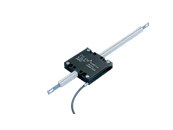I am studying Electrical Engineering and I came across one definition of the volt being defined as follows:
V = J / C
Where "V" is voltage measured in "volts", "J" is energy measured in "joules" and "C" is charge measured in "coulombs". If this definition is correct, it would appear that a 10 V battery should be able to produce 10 joules of energy per coulomb of charge. My question is, what is the relationship between volts and Mechanical Energy?
The reason I bring this up, is because if we assume that the acceleration due to gravity is 10 m/s², the amount of energy required to move 1 kg of water a distance of 1 meter vertically is equivalent to 10 joules. I used the following formula:
F = m * a = (1 kg) * (10 m/s²) = 10 newtons.
W = F * d = (10 N) * (1 m) = 10 joules.
Does this mean that using a 10 V battery, I should be able to create a device that is able to move 1 kg of water a distance of 1 meter up in the air? I am trying to better understand the relationship of volts as a difference in Electrical Potential between two points in space and somehow using this potential to move objects with a certain mass a certain distance. Perhaps I am mixing different physics concepts together. Any insight into this would be appreciated. Cheers.



Best Answer
Well yes, energy is energy. The only problem is converting it from one form of energy to another form of energy.
And you cannot take a random battery with 10 V. It has to have enough charge to be able to do the work.
So in a perfect world, you would build some magic mechanism, which would be able to lift something at 100 % efficiency when you supply it with 10 V. You want to lift 1 kg up 1 m, so you need approximately 10 J.
How much charge would you need? Well 1 C, but that's not a really useful measure you usually get with a battery. Most of the time you get something like amperehours or watthours. 1 Ah is equal to 3600 C (1 A is 1 C per second). So your battery would just need to have 1/3600 Ah. Or 2.8 mWh. This is so little energy - your phone could do this work surely 20000 times before running out of juice.
But your phone is running on 3.6 V - the voltage doesn't really matter (it will in a practical application), if you restate the equation, you will get J = V * C, so if you have less voltage you just need more charge to get the same energy.
Problem is, in reality you will have losses everywhere and you might get something like 80 % efficiency (conversion losses, friction in the mechanic) or something and so you will need more energy to do the work.
Devices like this do exist - they are called elevators.